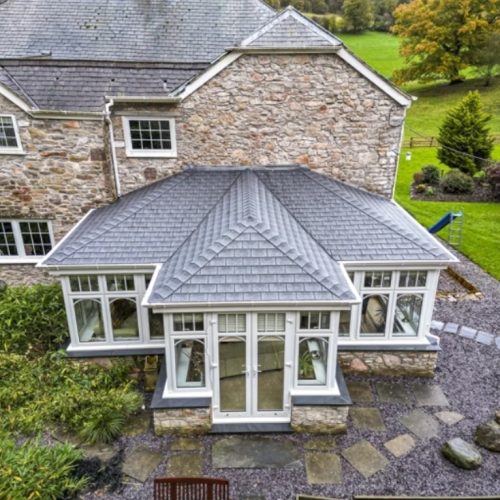Adding insulation to your conservatory roof can transform it into a space that’s usable year-round, enhancing comfort, energy efficiency, and property value. However, with a wide range of insulation options available, choosing the right one can feel overwhelming. This guide will walk you through everything you need to know to make an informed decision.
________________________________________
1. Understand the Benefits of Conservatory Roof Insulation
Before diving into options, it’s essential to understand why insulating your conservatory roof is a worthwhile investment.
Improved Temperature Regulation: A well-insulated conservatory retains heat in winter and reduces overheating in summer.
Energy Efficiency: By minimizing heat loss, insulation lowers energy consumption, reducing your heating and cooling costs.
Reduced Noise Levels: Insulation can block out external noise, creating a quieter indoor environment.
Enhanced Aesthetic Appeal: Modern insulation options often provide a sleek, finished look.
________________________________________
2. Assess Your Conservatory Type
Conservatories come in various designs, and the type of roof insulation suitable for your home depends on its structure. Common conservatory types include:
Edwardian and Victorian: Characterized by pitched roofs and elaborate frames, these designs often benefit from lightweight but high-performing insulation.
Lean-to: With a simpler, sloped roof design, lean-to conservatories often accommodate more straightforward insulation systems.
P-shaped or T-shaped: These larger, complex designs may require bespoke insulation solutions for uniform coverage.
Evaluate the shape, size, and structural integrity of your conservatory before deciding on an insulation method.
________________________________________
3. Consider Your Insulation Options
There are several insulation options available, each with unique benefits. Here’s a breakdown of the most popular ones:
a. Foil Insulation
Foil insulation is a reflective material designed to bounce heat back into the room while keeping cold air out.
Pros: Lightweight, easy to install, and cost-effective.
Cons: May not be the most aesthetically pleasing unless covered with decorative panels.
Best For: Homeowners on a budget looking for a quick solution.
b. Internal Insulated Panels
Insulated panels replace the existing roof panels with thermally efficient ones.
Pros: Excellent thermal performance and a polished look.
Cons: Higher installation cost and may require professional fitting.
Best For: Those seeking a long-term solution with minimal maintenance.
c. Solid Tiled Roofs
A tiled roof involves replacing the existing conservatory roof with a solid, insulated roof.
Pros: Maximum thermal efficiency, enhanced durability, and a stylish appearance.
Cons: More expensive and may require planning permission.
Best For: Homeowners looking to fully integrate the conservatory into their home.
d. Thermal Inserts
Thermal inserts fit into the existing roof panels to improve insulation without a full replacement.
Pros: Affordable, minimally invasive, and effective.
Cons: Limited aesthetic improvement.
Best For: Conservatories with polycarbonate roofs.
e. Plasterboard and Insulation Layers
This method involves layering insulation material under the roof and finishing with plasterboard for a clean look.
Pros: Combines thermal efficiency with an elegant finish.
Cons: Time-consuming installation.
Best For: Homeowners prioritizing aesthetics and comfort.
________________________________________
4. Evaluate Your Budget
Your budget plays a significant role in determining the type of insulation you can afford. Here are a few tips for balancing cost and quality:
Set Realistic Goals: Decide whether you’re aiming for maximum energy efficiency, improved aesthetics, or both.
Compare Quotes: Get multiple quotes from contractors to ensure competitive pricing.
Factor in Long-Term Savings: Higher initial costs for quality insulation often lead to reduced energy bills over time.
________________________________________
5. Check for Planning Permissions and Regulations
In some cases, modifying your conservatory roof may require planning permission or adherence to building regulations. Factors to consider include:
Weight Limitations: Ensure the structure can support the added weight of insulation or a solid roof.
Aesthetic Restrictions: Some properties in conservation areas or with listed status may face restrictions on visible changes.
Local Regulations: Consult with your local planning authority to confirm requirements.
________________________________________
6. Prioritize Quality Over Cost
While it’s tempting to choose the cheapest option, investing in high-quality materials ensures better performance and durability. Look for insulation with the following features:
High Thermal Resistance (R-value): The higher the R-value, the better the material resists heat transfer.
Fire Resistance: Choose materials that meet safety standards for fire resistance.
Moisture Resistance: Prevent condensation and damp issues by selecting moisture-resistant materials.
________________________________________
7. Consider Aesthetic Impact
The appearance of your conservatory is just as important as its functionality. If you plan to use the conservatory as a living or dining space, consider insulation options that blend seamlessly with your interior decor. Plasterboard finishes, for example, offer a smooth and modern look.
________________________________________
8. DIY vs. Professional Installation
Decide whether you’ll take on the project yourself or hire a professional. Each approach has its pros and cons:
DIY: Suitable for lightweight materials like foil insulation. It’s cost-effective but requires basic handyman skills.
Professional Installation: Ideal for complex solutions like solid roofs or plasterboard finishes. Although more expensive, it ensures a high-quality result.
________________________________________
9. Compare Warranties and Guarantees
Reputable insulation products and installers typically offer warranties or guarantees. These provide peace of mind and protect your investment. Look for:
Material Warranty: Covers defects or issues with the insulation material.
Installation Guarantee: Ensures the workmanship is of a professional standard.
________________________________________
10. Think About Future Upgrades
Consider whether your chosen insulation will accommodate future changes to your conservatory. For example, if you plan to convert it into a fully integrated living space, a solid roof might be a better long-term solution than thermal inserts.
________________________________________
11. Check Customer Reviews and Testimonials
Before committing to a specific product or installer, research customer feedback. Online reviews and testimonials provide valuable insights into:
The effectiveness of insulation materials.
The reliability and professionalism of installers.
The overall customer satisfaction rate.
________________________________________
12. Balance Functionality with Sustainability
Opting for eco-friendly insulation materials can reduce your carbon footprint. Consider products made from recycled or sustainable materials, and check for certifications such as the Forest Stewardship Council (FSC) mark or Energy Star ratings.
________________________________________
Conclusion: Making the Right Choice
Choosing the right conservatory roof insulation involves assessing your needs, budget, and the structure of your conservatory. By taking the time to explore your options and seek professional advice, you can transform your conservatory into a comfortable, energy-efficient space you’ll enjoy for years to come.
Investing in high-quality insulation not only enhances your home’s energy performance but also creates a more versatile living area. With the right planning, your conservatory can become the heart of your home, no matter the season.




